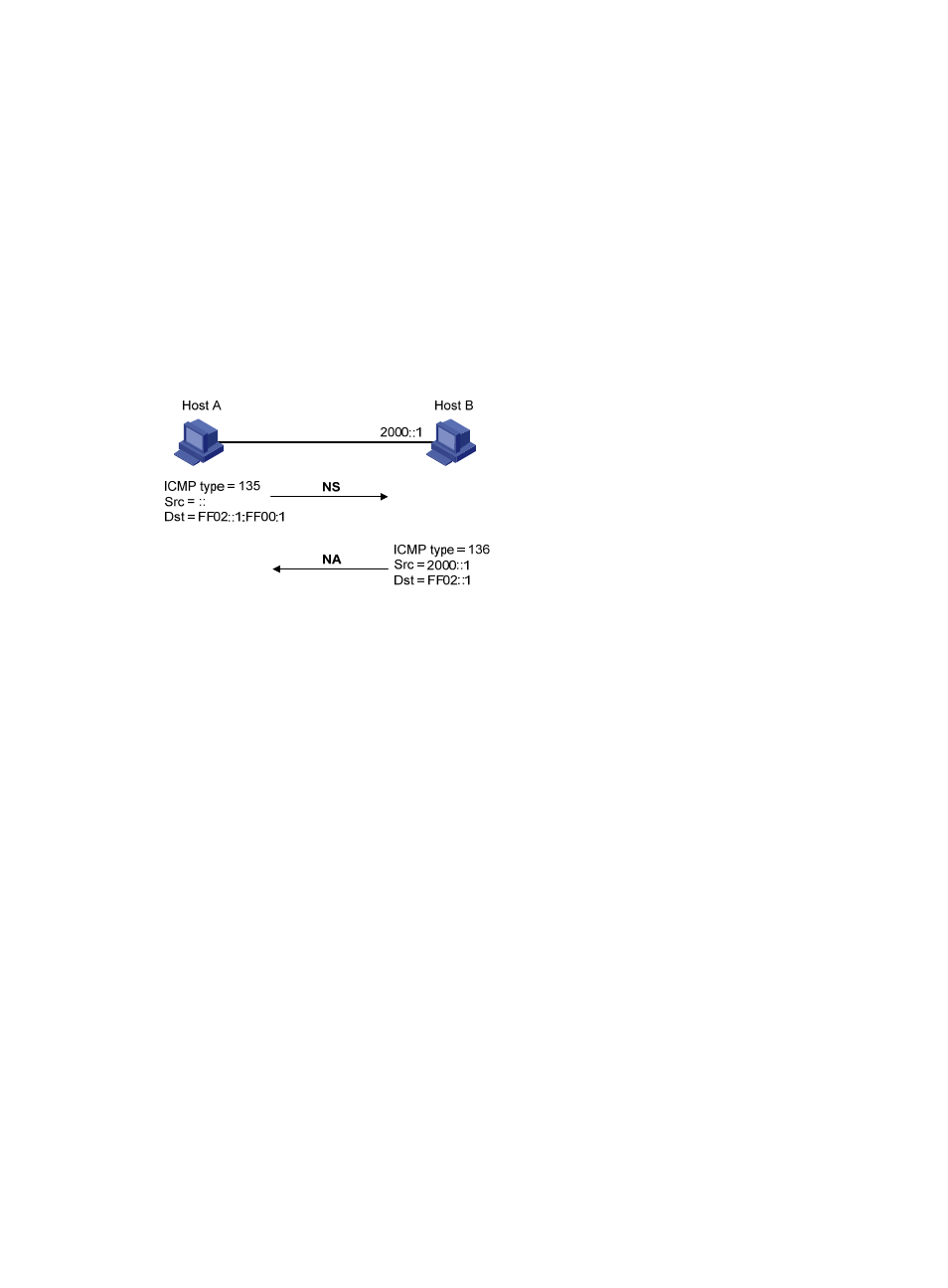Ipv4 dns configuration examples – H3C Technologies H3C S12500 Series Switches User Manual
Page 121

108
384B
Neighbor reachability detection
After Host A acquires the link-layer address of its neighbor Host B, Host A can use NS and NA messages
to test reachability of Host B as follows:
1.
Host A sends an NS message whose destination address is the IPv6 address of Host B.
2.
If Host A receives an NA message from Host B, Host A decides that Host B is reachable. Otherwise,
Host B is unreachable.
385B
Duplicate address detection
After Host A acquires an IPv6 address, it performs Duplicate Address Detection (DAD) to check whether
the address is being used by any other node (similar to gratuitous ARP in IPv4). DAD is accomplished
through NS and NA messages.
Figure 44 Duplicate address detection
1.
Host A sends an NS message whose source address is the unspecified address and whose
destination address is the corresponding solicited-node multicast address of the IPv6 address to be
detected. The NS message body contains the detected IPv6 address.
2.
If Host B uses this IPv6 address, Host B returns an NA message that contains its IPv6 address.
3.
Host A knows that the IPv6 address is being used by Host B after receiving the NA message from
Host B. If receiving no NA message, Host A decides that the IPv6 address is not in use and uses this
address.
386B
Router/prefix discovery and stateless address autoconfiguration
A node performs router/prefix discovery and stateless address autoconfiguration as follows:
1.
At startup, a node sends an RS message to request configuration information from a router.
2.
The router returns an RA message containing the Prefix Information option and other configuration
information. (The router also periodically sends an RA message.)
3.
The node automatically generates an IPv6 address and other configuration parameters according
to the configuration information in the RA message.
The Prefix Information option contains an address prefix and the preferred lifetime and valid lifetime of
the address prefix. A node updates the preferred lifetime and valid lifetime upon receiving a periodic RA
message.
The generated IPv6 address is valid within the valid lifetime and becomes invalid when the valid lifetime
expires.
After the preferred lifetime expires, the node cannot use the generated IPv6 address to establish new
connections, but can receive packets destined for the IPv6 address. The preferred lifetime cannot be
greater than the valid lifetime.